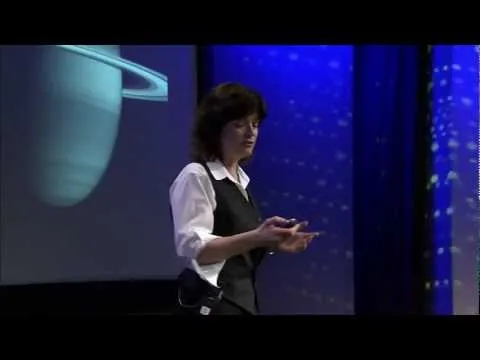Today is a very special day for many of us who are working in the space sector. At 7:55am EST / 11:55 GMT this morning, we received the final signal from the Cassini Spacecraft before it's intended dissent into Saturn. The Cassini spacecraft has been in orbit around Saturn for more than 14 years, since the summer of 2004. Extraordinary, considering it was initially planned to last for only 4 years between 2004 and 2008. Instead, Cassini has continued to exceed our expectations.
Let's have a look at some of the marvels brought by this extraordinary work of scientific and engineering talent.

Perhaps the most famous image of Saturn taken by the Cassini spacecraft. The Earth can be seen as a tiny blue dot just to the upper left of the rings
image source
If you ask me, I would say that Cassini has delivered some of the most beautiful images that have ever been taken. Not only by a spacecraft but by anyone or anything, ever. I would probably rank Cassini up there in my top three list of favorite space exploration missions together with the Voyager 1 spacecraft and the Hubble Space Telescope (sorry Rosetta). All of which have brought our minds to new places in the Universe, and enriched our beings.
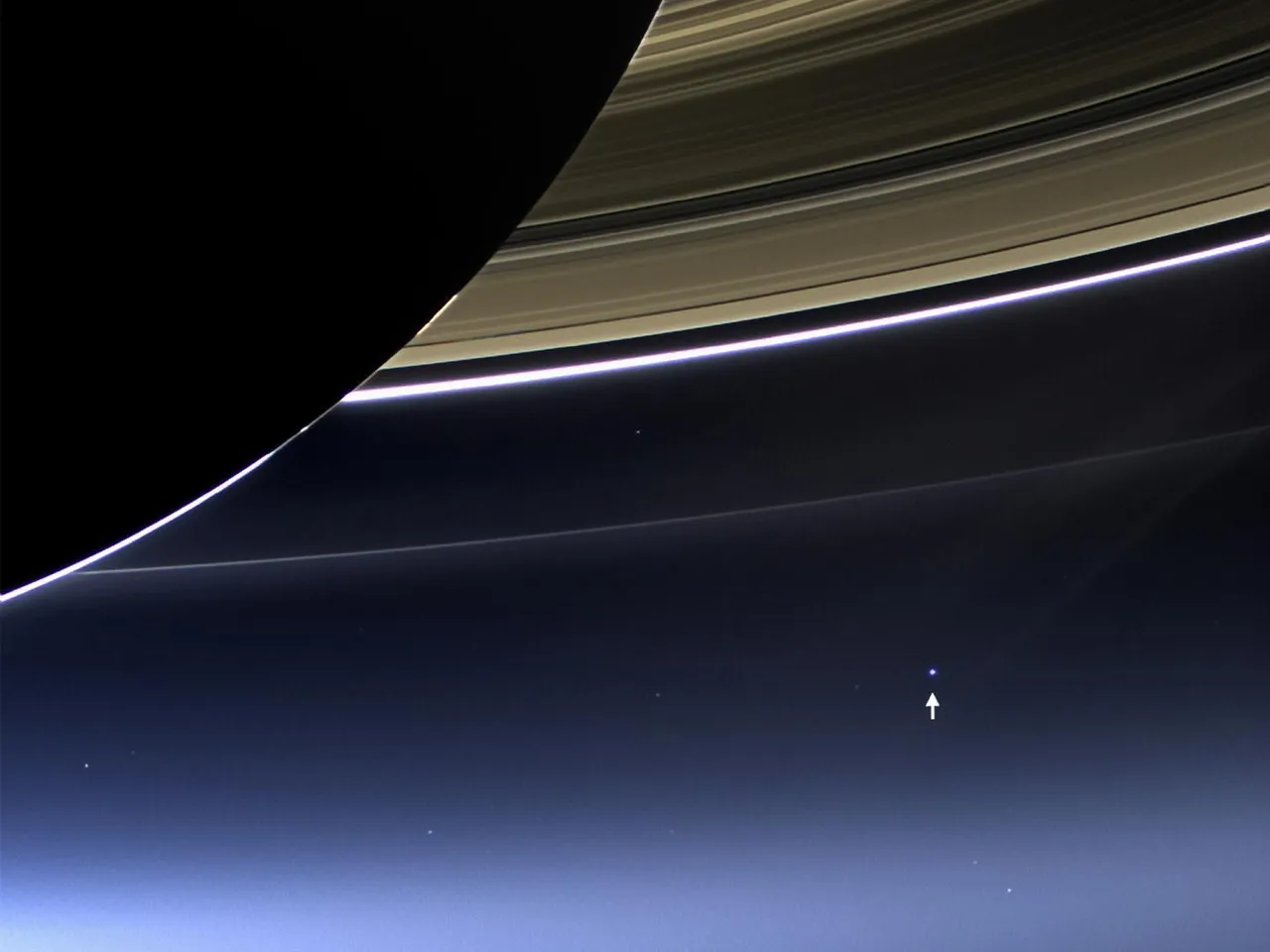
Another Cassini image of Saturn, again with the pale blue dot we call our home visible to the lower right
image source
For many working at either NASA, ESA or ASI - the Italian Space Agency, - Cassini has been a lifelong project. It's perhaps hard to believe, but the work began all the way back in 1982 when NASA and ESA formed a working group to look at potential areas the two might cooperate. 8 years before I was even born! The collaboration has since been seen as the starting point for the good relations that exist between the European and American Space Agencies today. It took 15 years before the spacecraft was launched in launched in 1997. To fully appreciate and understand how impressive the delivery of the Cassini mission has been, you may want to imagine what technologies in the early to mid-90s were like. Keep that in mind as you look at its many stunning images.
6 years and 261 days later, Cassini finally arrived in orbit around Saturn! Traveling through space is by no means a highway trip though. Getting to Saturn with today's launchers requires numerous flybys of other planets to gather momentum. To benefit from their gravitational force, the spacecraft use them almost like a slingshot to launch itself further, as can be seen from the chart below.
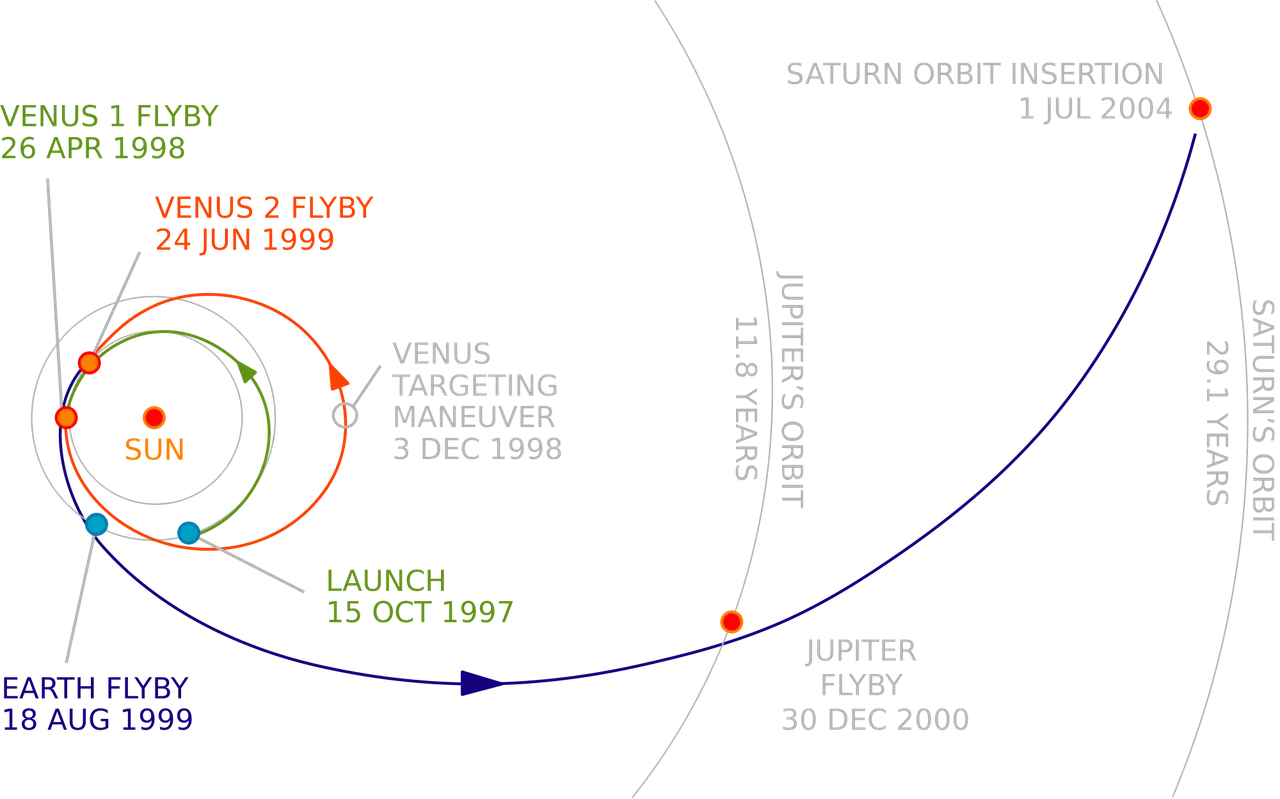
Cassini's interplanetary trajectory
image source
It's interesting to note how much added time the necessary flybys of Venus (that after all takes you closer to the Sun, rather than further into the Solar System) adds to the total travel time. Indeed, one of the benefits of NASA's next-generation launch vehicle the SLS (Space Launch System) will be that the greater force at which a spacecraft is launched will reduce the necessary flybys by 1, and thus cut down the total travel time by 1-2 years.
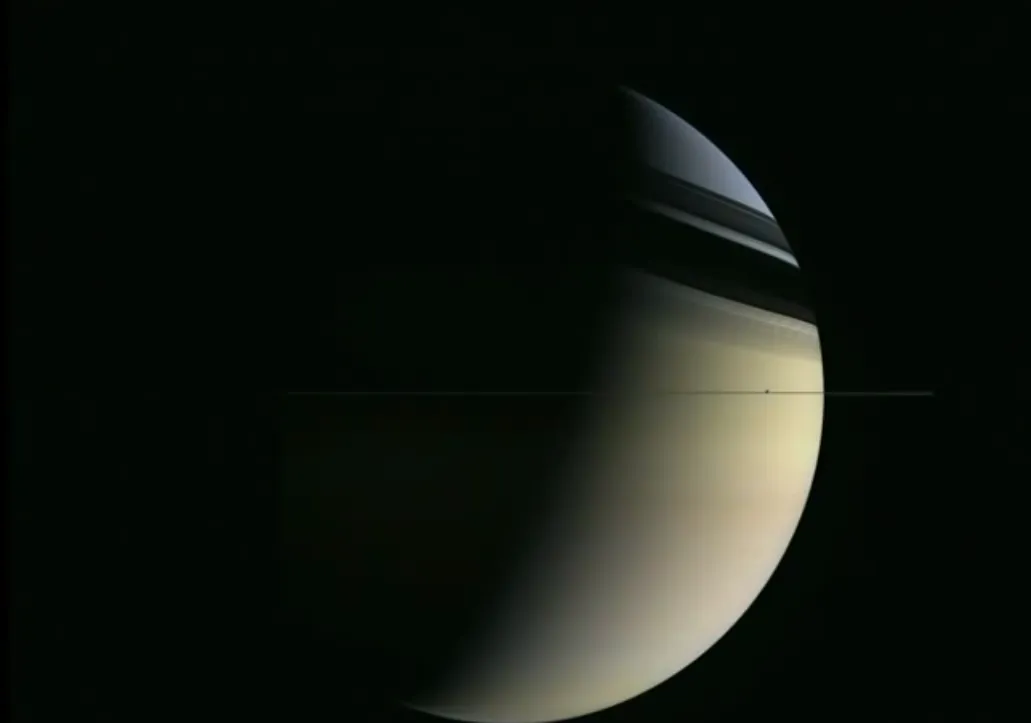
Cassini image of Saturn taken "sideways"
image source
When Cassini arrived in orbit around Saturn, one of the first images it took was from above the equator of the big gas giant. It's a fascinating image to watch, as you get to see just how thin the rings around Saturn actually are.
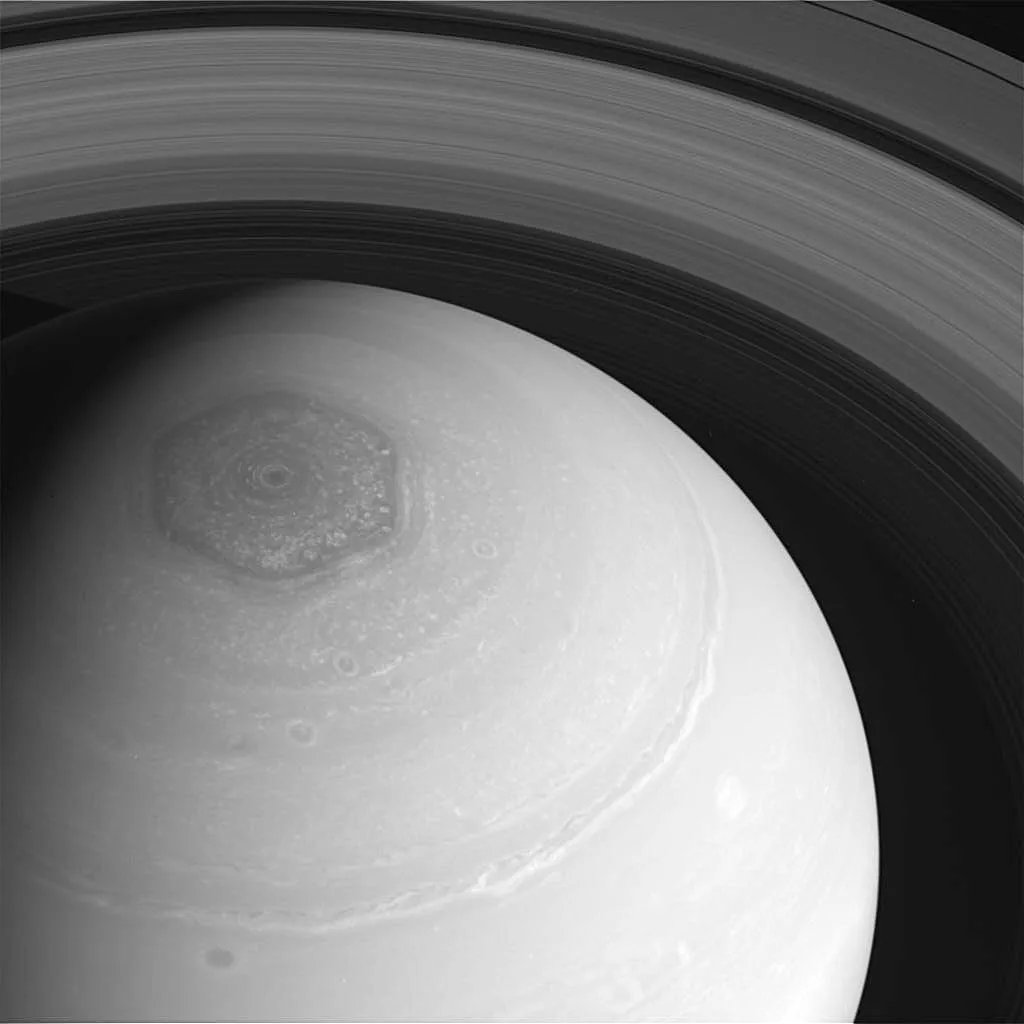
Saturn's North Pole captured by Cassini
image source
But the Cassini mission did more than just study Saturn. In recent years, we have seen some stunning images also of one of its moons, Enceladus. Enceladus has received increased interest from researchers and space enthusiasts alike thanks to Cassini's discovery in 2014 which provided strong evidence of an ocean existing on the little Moon seen on the image below.
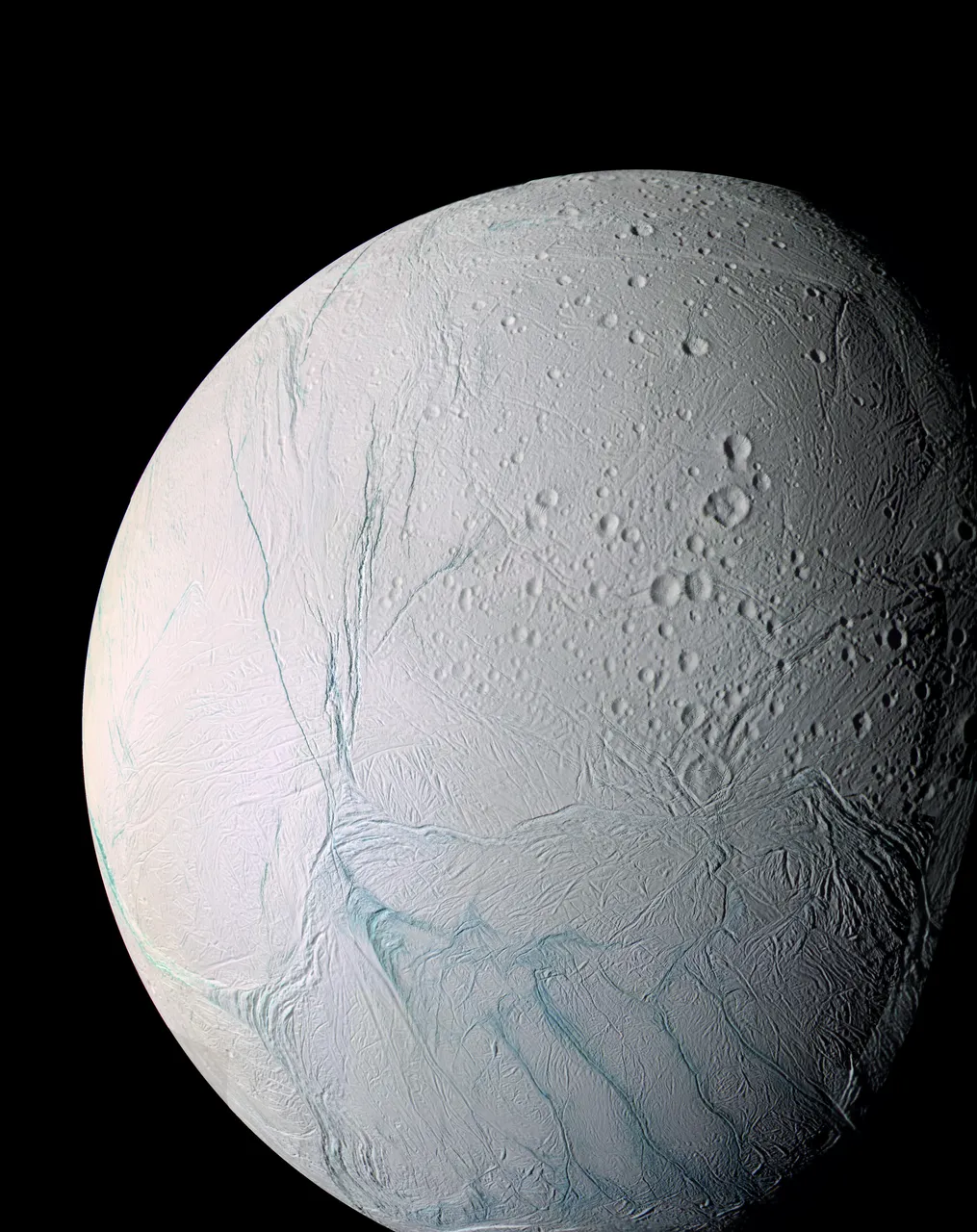
Cassini sees the southern latitudes on Enceladus, Saturn's sixth largest Moon
image source
The presence water is of immense importance to space explroation for two reasons in particular: 1. It greatly increases the likelihood of life. 2. Water is potential fuel source to enable further space travel by splitting the Hydrogen and Oxygen. Again, Cassini has shown the way!
For me, my love for Cassini really started with this amazing TED Talk by Carolyn Porco October 2007. In it, she shares what, at that point in time, she saw as the most interesting stories stemming from discoveries made by Cassini, as well as presenting many of the beautiful early images that were taken. It's hard to believe that it's almost exactly 10 years ago I fell in love with this piece of hardware!
Anyhow, I am so glad to be part of a species that has it in them to discover and understand the Universe in which it lives. I am glad to see that despite all the troubles and difficulties we may have, we find the time, the resources and the drive to also pursue the frontiers of knowledge.

The NASA Jet Propulsion Laboratory with a beautiful tweet following the successful ending of Cassini
image source
Cassini's mission might be over, but its impact on our scientific understanding of the world has only just begun.
Fredrik / @fredrikaa
